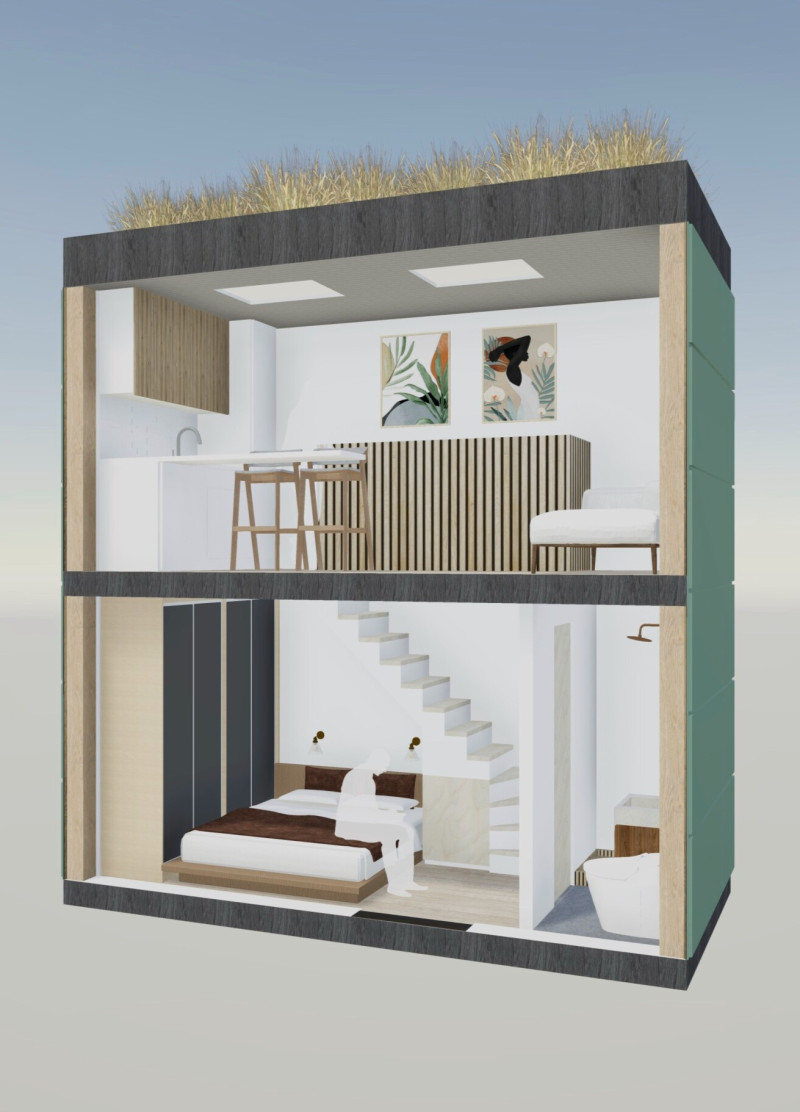5 key facts about this project
The overarching concept of the project is rooted in the idea of harmonizing structure with nature. This is echoed in the selection of materials that prioritize sustainability, including locally sourced timber, recycled concrete, and energy-efficient glass. Each of these materials plays a crucial role in the building’s performance and appearance, allowing for both durability and a visual dialogue with the outdoor environment. The warm tones of the timber provide a contrast to the sleek, reflective surfaces of the glass, creating a balance that is both inviting and modern.
One of the most important aspects of this project is its multifunctional spaces, designed to accommodate a variety of uses. The open floor plan facilitates natural movement throughout the building, encouraging interaction among users while allowing for flexible arrangements depending on specific needs. Large windows and sliding glass doors not only flood the interior with natural light but also offer stunning views of the adjacent landscape, blurring the lines between inside and outside.
Incorporating green design principles was a priority, and this is evident in the building’s features. A green roof not only serves as an insulation layer but also as a space for local vegetation to thrive, contributing to biodiversity. Rainwater harvesting systems are implemented to reduce reliance on municipal water sources, demonstrating a proactive approach to resource management. Moreover, solar panels installed on the roof contribute to the building’s energy independence, showcasing the potential for architecture to play a crucial role in addressing climate challenges.
The architectural design encapsulates a unique approach to form and function. The dynamic roofline, inspired by the natural topology of the region, enhances the building’s profile against the skyline while simultaneously providing shelter from the elements. This attention to form is not merely aesthetic; it serves practical purposes, directing rainwater and maximizing sunlight exposure to living areas.
Circulation is another key element that has been masterfully considered in this project. Carefully planned pathways enhance not only physical movement but also the overall user experience. The use of visual markers and subtle changes in materiality guide occupants through the space, creating a journey that unfolds as one navigates from one area to another. This strategic design promotes an intuitive understanding of the building’s layout, making it accessible for everyone.
Uniqueness is found in the details, such as the choice of fixtures and finishes that reflect both the integrity of the materials used and the craftsmanship involved in their application. Custom installations that echo the thematic elements of the architecture enhance the overall experience, creating a cohesive narrative that runs through both the visual and functional aspects of the space.
The project also prioritizes community engagement, with areas designated for public use that invite local residents to interact with the building. This integration into the community framework not only serves the purpose of the architecture itself but also enriches the cultural landscape of the area. By fostering a connection with the locality, the design elevates its presence beyond that of a mere structure; it becomes a part of the social fabric of the environment.
In summary, the project serves as an exemplary model of modern architectural design that respects its surroundings while providing functional, flexible spaces. By embracing sustainable practices and innovative materials, it stands as a forward-thinking example of how architecture can meet contemporary challenges. Readers are encouraged to explore the project presentation for deeper insights, including architectural plans and sections that illustrate the nuances of this engaging design. Discovering the intricate architectural ideas and solutions employed can provide valuable understanding of this unique architectural endeavor.


 Leonoor Johanna G Leus,
Leonoor Johanna G Leus, 























